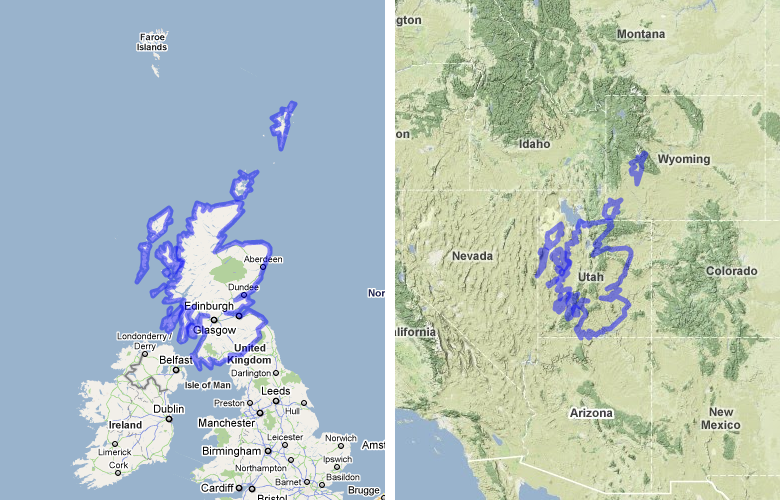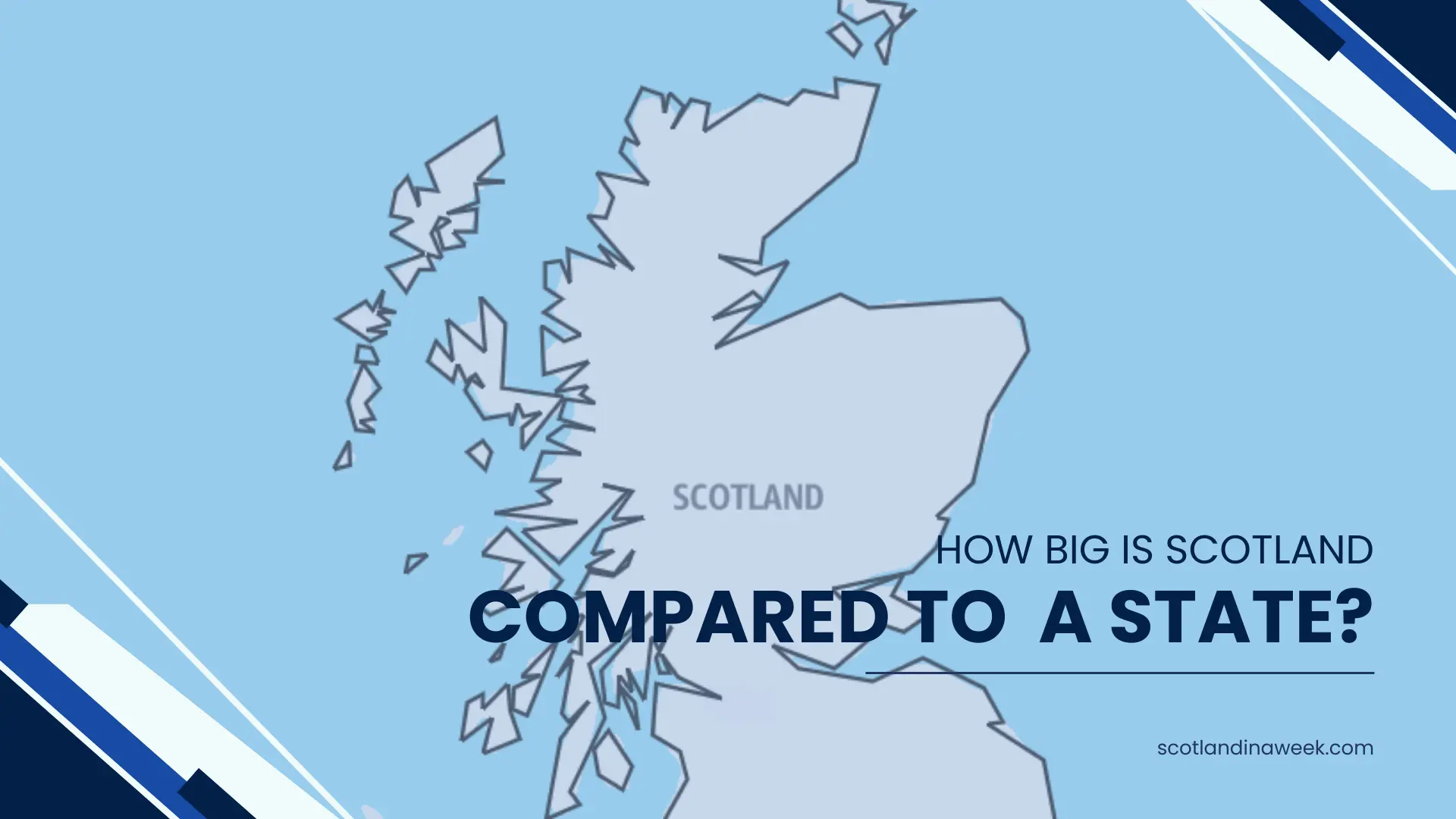Is it possible to truly grasp the scale of a nation without seeing it firsthand? The answer might surprise you:
Scotland, a land of lochs and legends, finds an uncanny echo in the American landscape, specifically, in the state of South Carolina.Scotland, a constituent country of the United Kingdom, often evokes images of rugged highlands, historic castles, and vibrant cities. But how does one truly visualize its size? While vastly smaller than the United States as a whole, and even dwarfed by some of its individual states, Scotland presents an intriguing comparative study. The quest to find a US state that mirrors Scotland's dimensions leads us down a path of geographical comparisons and statistical analysis.
| Category | Information |
|---|
| Name | Scotland |
| Location | Part of the United Kingdom |
| Land Area | 30,414 square miles (77,910 square kilometers) |
| Comparable US State | South Carolina |
| Interesting Fact | Home to approximately 787 islands, with around 130 inhabited. |
| North-South Length | 441 km (274 miles) |
| East-West Width | Varies from 38.8 km to 248 km |
| Related Link | Visit Scotland |
Numerous sources point to South Carolina as the US state closest in size to Scotland. Scotland's land area is approximately 30,414 square miles (77,910 square kilometers). This figure positions it remarkably close to South Carolina, which boasts a land area of around 30,060 square miles. The similarity is striking, suggesting a tangible parallel between the two regions.The United Kingdom, comprising England, Scotland, Wales, and Northern Ireland, collectively spans approximately 94,000 square miles. This makes the entire UK comparable to the state of Oregon, which measures around 98,000 square miles. Within this context, individual regions of the UK find their counterparts in various US states.For instance, England is often compared to Iowa in size, while Wales bears resemblance to New Jersey. These comparisons aren't merely about landmass; they also touch upon population densities and regional characteristics. Data from the 2011 UK census and the 2010 US census further illuminate these parallels. The Southeast region of England, with a population of 8.63 million, closely mirrors New Jersey's 8.79 million residents.Beyond Scotland and South Carolina, other size comparisons offer intriguing perspectives. Iceland, with its dramatic landscapes, covers approximately 103,000 square kilometers, making it roughly the size of Ohio. The nuances of comparing countries, regions, and cities often reveal unexpected relationships. For example, Scotland is approximately 8.47 times larger than Cyprus and 1.60 times larger than Slovakia. Conversely, it is only 0.17 times the size of Sweden and 0.26 times the size of Italy.These figures highlight the importance of scale and perspective when considering geographical comparisons. While Scotland may be similar in size to South Carolina, it is significantly smaller than countries like Sweden or Italy. The exercise of comparing sizes underscores the vastness of some nations and the relative compactness of others.Consider Ireland, another island nation with close ties to the UK. Ireland covers 84,421 square kilometers (32,595 square miles). The United States, in contrast, encompasses 9,833,520 square kilometers (3,796,742 square miles). This makes the US approximately 116 times larger than Ireland. One could theoretically fit 116 Irelands within the borders of the United States.At the other end of the spectrum lies Texas, the largest state in the contiguous United States. With an area of 268,596 square miles, Texas dwarfs Scotland, which covers about 30,414 square miles. Scotland is roughly 8% the size of Texas. This comparison further emphasizes the diversity of scale within the United States itself.Visualizing these comparisons can be challenging, but tools exist to aid in this process. By utilizing state perimeters in KML format, it is possible to superimpose two US states on the same map, illustrating their relative sizes. This allows for a more intuitive understanding of geographical relationships.When comparing land areas, Oregon, at 95,996 square miles, emerges as the US state closest in size to the entire United Kingdom. However, breaking down the UK into its constituent parts reveals more nuanced comparisons. As previously mentioned, England is similar in size to Iowa, Scotland to Indiana, and Wales to New Jersey. These comparisons take into account not only land area but also, to some extent, population distribution and regional characteristics.Scotland itself boasts a diverse geography, encompassing 787 islands, of which around 130 are inhabited. The mainland stretches 441 kilometers (274 miles) from north to south, and its width varies from 38.8 kilometers to 248 kilometers from east to west. This varied terrain contributes to Scotland's unique character and its appeal as a destination.The historical context of these regions also adds depth to the comparisons. New York, for example, was one of the original thirteen colonies that formed the United States. To distinguish it from New York City, the state is often referred to as New York State. Its diverse geography and rich history make it a significant entity within the US landscape.Ultimately, the comparison of Scotland's size to US states is more than just a numerical exercise. It is a means of understanding the relative scale of different regions, appreciating their unique characteristics, and gaining a broader perspective on the world. While Scotland may be smaller than many US states, its cultural impact and historical significance are undeniable.The search for a US state that mirrors Scotland's dimensions leads us back to South Carolina. Their similar land areas make them comparable, but the comparison extends beyond mere statistics. It invites us to consider the diverse geographies, histories, and cultures that shape both regions.In the final analysis, while precise equivalencies are elusive, the comparison of Scotland to South Carolina offers a tangible and insightful perspective on the size and scale of these distinct regions. It is a testament to the power of geographical comparisons to illuminate our understanding of the world.


